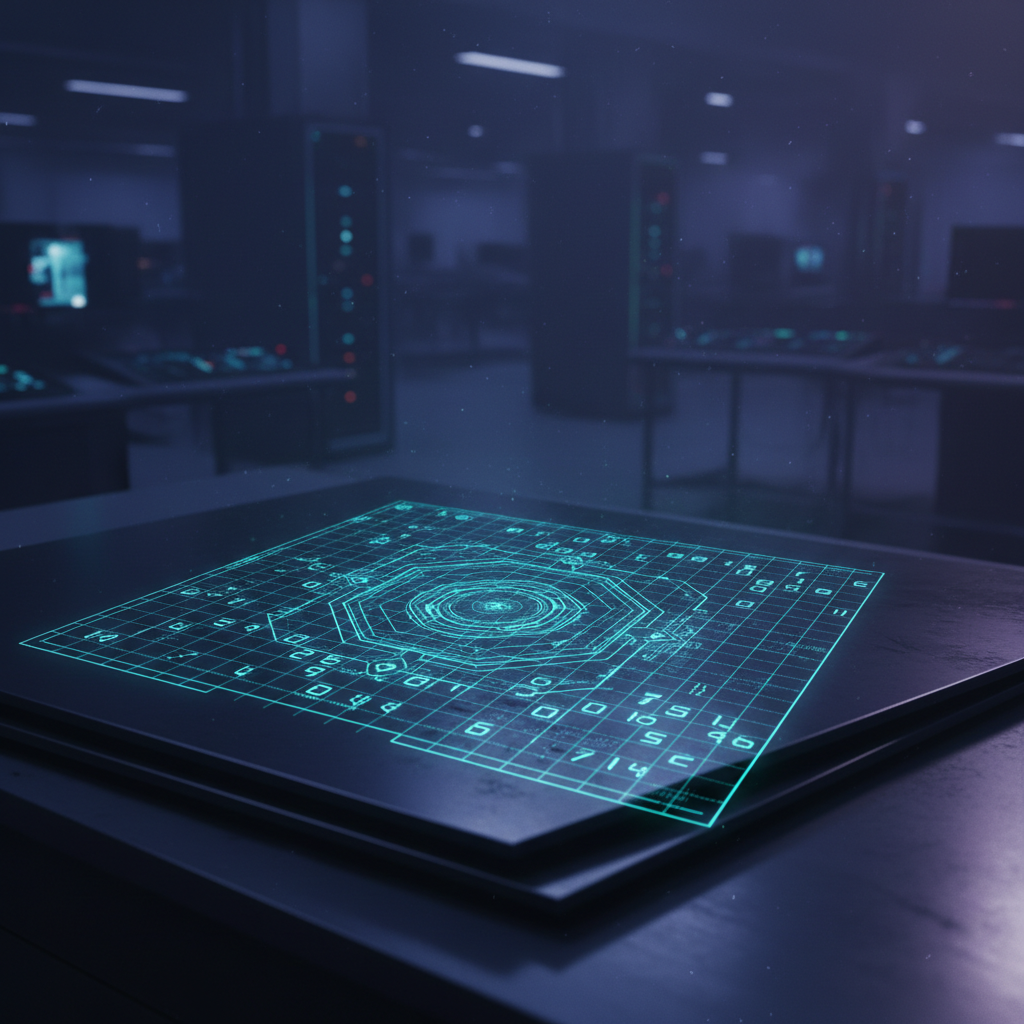The movie ‘Knowing’ (2009) stars Nicolas Cage as an MIT astrophysicist who discovers a cryptic message from a 1959 time capsule that predicts the dates and death tolls of major disasters. As he uncovers the truth, he realizes the predictions lead to a final, world-ending cataclysm that he must confront to save his son.
Remember the thrill of finding a Nicolas Cage movie you haven’t seen in ages? His filmography is famously diverse, spanning the entire spectrum of cinematic quality from masterpieces to more… unique experiences. Nestled in that intriguing lineup is Knowing, the 2009 sci-fi thriller that combines a chilling apocalyptic premise with a heavy dose of existential dread.
This isn’t just another disaster flick. Knowing delves into prophecies, determinism, and a truly unforgettable—albeit controversial—ending. Whether you’re revisiting the film or considering it for the first time, you’re likely asking one question: “Is this particular Nicolas Cage vehicle worth your time?” We’re here to explore what makes Knowing stand out, from its nail-biting suspense to its thought-provoking themes and, of course, that ending everyone talks about.
Join us as we unravel the mysteries behind the numbers, explore what truly happened to Earth, and deliver our final verdict. Does Knowing still hold up as a captivating and essential sci-fi thriller? Let’s begin by breaking down the premise of this fascinating film.
What is the Movie ‘Knowing’ About?

The Time Capsule Prophecy
The 2009 sci-fi thriller Knowing, starring the ever-intense Nicolas Cage, kicks off with a chilling premise. In 1959, elementary school students are asked to draw their visions of the future. Their creations are then sealed in a time capsule, set to be opened 50 years later.
Fast forward to 2009. The time capsule is unearthed, revealing typical children’s drawings of futuristic cars and moon bases. However, one drawing stands out: a sheet of paper densely packed with a seemingly random string of numbers.
This strange document finds its way to Caleb Koestler, the son of astrophysicist Professor John Koestler (Nicolas Cage). A brilliant but troubled man, John initially dismisses the paper as childish scribbles. Soon, however, he uncovers a terrifying pattern. The digits are not random; they are precise predictions that detail the dates, death tolls, and coordinates of every major global disaster from the past 50 years.
Koestler realizes he holds a powerful yet terrifying prophecy. The numbers have accurately documented past events, from 9/11 to various natural catastrophes, setting the stage for a heart-pounding race against time.
A Professor’s Race Against Time
Armed with this unsettling knowledge, Professor John Koestler’s life takes a dramatic turn. He discovers the list of prophecies is not finished and that several catastrophic events are still to come—some in the immediate future. Feeling an urgent sense of responsibility, John sets out to prevent these disasters before they happen.
The quest becomes deeply personal when his son, Caleb, starts hearing mysterious whispers from unseen figures connected to the prophecy. To protect his son, John seeks help from Diana Wayland (Rose Byrne), the daughter of the girl who originally wrote the numbers. Though initially skeptical, Diana is soon drawn into John’s desperate attempt to decode the final predictions.
As the next predicted disaster looms, John battles disbelief from others, the crushing weight of his knowledge, and increasingly ominous forces. He must unravel the final, cryptic predictions before it’s too late, as the stakes are immense. The numbers point toward a cataclysm that threatens not just isolated communities but all of humanity, driving the core of the sci-fi thriller and keeping viewers on the edge of their seats.
Is the Knowing movie worth watching?

The Good: Suspense, Pacing, and Spectacle
Is Knowing worth watching for its strengths alone? Absolutely. This film excels at building palpable tension, as director Alex Proyas masterfully crafts an atmosphere of impending doom that keeps viewers on edge from the start.
The pacing is relentless. Once Professor John Koestler (Nicolas Cage) begins deciphering the numbers, the movie rarely slows down, with each revelation bringing a new sense of urgency that keeps audiences deeply engaged.
Furthermore, Knowing delivers impressive spectacle through its truly unforgettable disaster sequences. A harrowing plane crash and a devastating train derailment are particularly chilling, showcasing exceptional visual effects that underscore the film’s core theme of inescapable fate. The scale of the destruction feels both immense and impactful.
Nicolas Cage himself is a major draw. He delivers a raw and emotional performance, powerfully portraying a father desperate to protect his son. Cage’s unique intensity perfectly suits the escalating dread of the narrative.
The Divisive: The Ending and Plot Points
However, Knowing is not without its polarizing elements, particularly its ending, which tends to split audiences down the middle. The film’s third act transitions significantly from a grounded sci-fi thriller to one with strong spiritual and allegorical themes, a shift that many find jarring.
Some plot points also raise questions, especially the nature and role of the “Whisper People.” While their enigmatic presence leads to a unique resolution, it might not satisfy all viewers. Some find it stretches credulity too far, whereas others embrace its bold, unconventional approach that challenges typical genre conventions.
Ultimately, the film asks big questions about determinism versus free will, and its conclusion offers a definitive, albeit controversial, answer. Consequently, whether the movie is a thought-provoking masterpiece or a narrative misstep depends entirely on your perspective.
Our Final Verdict
So, is the Knowing Nicolas Cage movie worth your time? Our verdict is a resounding yes, with a caveat. This sci-fi thriller is a unique cinematic experience that is ambitious, visually striking, and dares to explore profound themes.
You should definitely watch Knowing if you:
- Enjoy intense, suspenseful thrillers.
- Appreciate grand-scale disaster sequences.
- Are a fan of Nicolas Cage‘s more dramatic roles.
- Don’t mind a film that challenges your expectations.
- Are open to unconventional endings.
While the ending is divisive, it’s what sparks discussion and makes Knowing such a memorable film. It’s a movie that stays with you long after the credits roll, so give it a watch and form your own opinion on this fascinating, often debated, sci-fi journey.
What happened to the earth in Knowing?

The 2009 sci-fi thriller Knowing, starring Nicolas Cage, builds towards a devastating conclusion involving a cataclysm that reshapes Earth’s fate. To fully appreciate the film’s scope, it’s essential to understand the events leading to this finale. This section breaks down exactly what happened to our planet in Knowing.
Decoding the Final Numbers
Professor John Koestler (Nicolas Cage) discovers a coded message written in 1959 by a young girl named Lucinda. While the message initially appears to be a sequence of random numbers, John soon deciphers its terrifying meaning.
The numbers are a code that reveals specific information about past and future tragedies:
- Dates: The exact date of each major disaster.
- Death Tolls: The precise number of lives lost in each event.
- Coordinates: Most chillingly, the geographic coordinates pinpointing where each disaster will occur.
As John races against time, he uncovers one final set of numbers. Unlike the others, this sequence doesn’t point to a localized disaster but instead foretells a global catastrophe. This chilling revelation sets the stage for Earth’s ultimate destruction in Knowing.
The Solar Flare Catastrophe
The final set of numbers predicts an event of unprecedented scale: a massive solar flare. John soon realizes this is no ordinary solar event but a Coronal Mass Ejection (CME) powerful enough to sterilize the entire planet.
The cataclysm unfolds in a devastating sequence:
- A colossal solar flare erupts from the sun.
- It unleashes a wave of superheated radiation and plasma directly toward Earth.
- The powerful energy blast strips away the atmosphere.
- Finally, it incinerates all life on the surface.
John’s terrifying discovery is soon confirmed by scientists: the impending solar flare is unavoidable. It guarantees total global annihilation, and humanity has no defense against such a cosmic force. The Earth, as we know it, is facing its end [1], cementing the film’s depiction of a true end-of-the-world scenario.
The Role of the ‘Whisper People’
Amidst the impending doom, mysterious, enigmatic figures known as the “Whisper People” emerge. Often seen whispering to children, their true nature is initially unclear. However, as the catastrophe nears, their ultimate purpose is revealed.
It is revealed that the Whisper People are extraterrestrial beings who have been observing humanity. Their goal is not destruction but preservation. To that end, they select certain children—including John’s son, Caleb, and Diana’s daughter, Abby—to save from the apocalypse.
Their mission unfolds in three stages:
- Selection: They choose children who are receptive to their call.
- Guidance: They use subtle whispers and visions to guide the chosen ones.
- Evacuation: Just before the solar flare hits, they arrive to transport the children to a new world.
The Whisper People represent hope amidst despair. While they cannot save Earth, they offer a future for a select few, ensuring that humanity survives on another world. Their benevolent intervention provides a powerful glimmer of light in the film’s otherwise dark ending.
Is Knowing a religious movie?
Exploring Biblical Allegories
It’s no surprise that many viewers find strong religious themes woven into the fabric of Knowing, as the film offers a compelling narrative rich with biblical allegories. These connections add layers of depth to the sci-fi thriller.
One of the most prominent allegories is the concept of a chosen few, where a select group of children are guided away to escape impending destruction. This narrative directly mirrors tales of divine intervention and salvation found in religious texts.
Furthermore, the pivotal “Whisper People” appear throughout the film as mysterious beings who guide the children to safety. Their role strongly suggests they are angelic figures, acting as messengers or protectors from a higher power.
The film’s climax, which involves an escape to a new world, strongly echoes the story of Noah’s Ark. As humanity faces a global catastrophe, a remnant is saved and transported to a pristine new beginning. This ark-like salvation serves as a powerful symbol.
These allegories are built upon several key elements:
- The Chosen Children: Like specific individuals saved in biblical floods or destructions, certain children are predestined for survival.
- The Whisper People: Their ethereal nature and guidance suggest divine or angelic intervention, leading the chosen to safety.
- The Solar Flare: This apocalyptic event functions as a divine judgment or cleansing that wipes out a fallen world.
- The New Earth: The destination for the survivors signifies a paradise or a fresh start, free from the old world’s corruption, which parallels biblical promises of new heavens and a new earth.
- John Koestler’s Role: Nicolas Cage’s character, John, acts as a reluctant prophet who deciphers cryptic messages and tries to warn humanity, mirroring biblical prophets burdened with foreknowledge.
Taken together, these elements make a strong case for Knowing‘s significant religious undertones, exploring themes of faith, judgment, and redemption through a sci-fi lens.
Determinism vs. Free Will
Knowing also deeply explores the age-old philosophical debate of determinism versus free will. This tension is central to the film’s plot and fuels much of its suspense, constantly asking whether humanity truly has a choice.
The film leans into the concept of determinism, which suggests that all events are predetermined and the future is already written. The central prophecy, for example, accurately predicts every major disaster with such specificity that it points toward a deterministic universe.
John Koestler battles this idea, desperately trying to alter the prophecy’s course and save lives. However, every effort he makes paradoxically aligns with or even facilitates the prophecy’s fulfillment, raising critical questions about his agency.
The film presents a universe where fate seems unyielding, as events unfold exactly as predicted and no one can change the predetermined outcomes. This notion can be unsettling because it challenges our understanding of control over our own lives.
Key aspects highlighting this debate include:
- The Unchangeable Prophecy: The numbers foretell every catastrophe with terrifying precision, and no action taken by the characters can prevent these events.
- John’s Efforts: John’s desperate but failed attempts to intervene—such as stopping the plane crash and subway derailment—reinforce the idea of an unalterable future.
- The Chosen Ones’ Role: The children being “chosen” implies a predestined path, as their rescue results not from human intervention but from a cosmic plan.
- The Ending’s Clarity: The ending, where the solar flare occurs precisely as foretold and the chosen children depart, strongly suggests that free will had no sway over the grand cosmic design.
Ultimately, Knowing leans heavily towards determinism, suggesting that certain events, especially on a global scale, are an inevitable part of a larger, predetermined plan. This leaves viewers pondering the true extent of human agency in the face of destiny.
Frequently Asked Questions About ‘Knowing’
Is there a part 2 of The Knowing?
Many fans wonder if the story continues, but there is no official part 2 or sequel to the 2009 sci-fi thriller Knowing. The film was created as a complete, standalone narrative.
Director Alex Proyas and the creative team intentionally concluded the story in one film. As a result, the ongoing mystery of the numbers and the fate of the “whisper people” are left to the viewer’s imagination.
Who was in the cast of Knowing?
Knowing features a talented cast that brings the film’s intense narrative to life. The actors delivered powerful performances well-suited to the story’s high stakes.
Here are the principal actors who starred in Knowing:
- Nicolas Cage as Professor John Koestler: A widowed astrophysicist who deciphers the mysterious numbers.
- Rose Byrne as Diana Whelan: The daughter of Lucinda Embry, the original author of the prophetic sequence.
- Chandler Canterbury as Caleb Koestler: John’s son, who discovers the cryptic message in the time capsule.
- Lara Robinson as Lucinda Embry / Abby Whelan: Young Lucinda, who wrote the numbers, and Diana’s daughter, Abby.
- Ben Mendelsohn as Phil Bergman: John Koestler’s university colleague and friend.
- Nadia Townsend as Grace Koestler: John’s late wife, seen in flashbacks.
- Terry Camilleri as The Stranger: One of the enigmatic “whisper people.”
Together, this core cast skillfully portrayed the film’s escalating tension and dramatic revelations [2].
Where can you stream Knowing?
If you want to watch Knowing, keep in mind that its availability on streaming platforms can change. Because streaming libraries are updated frequently, it’s best to check a current service for the film.
As of recent checks, Knowing is typically available on various video-on-demand (VOD) services, which allow you to rent or buy the movie digitally.
Popular platforms where you might find Knowing for rent or purchase include:
- Amazon Prime Video
- Google Play Movies & TV
- YouTube Movies
- Apple TV
- Vudu
For the most up-to-date information on where to stream Knowing, we recommend using a reliable streaming aggregator service [3]. These sites provide real-time updates on which platforms offer the film in your region.
